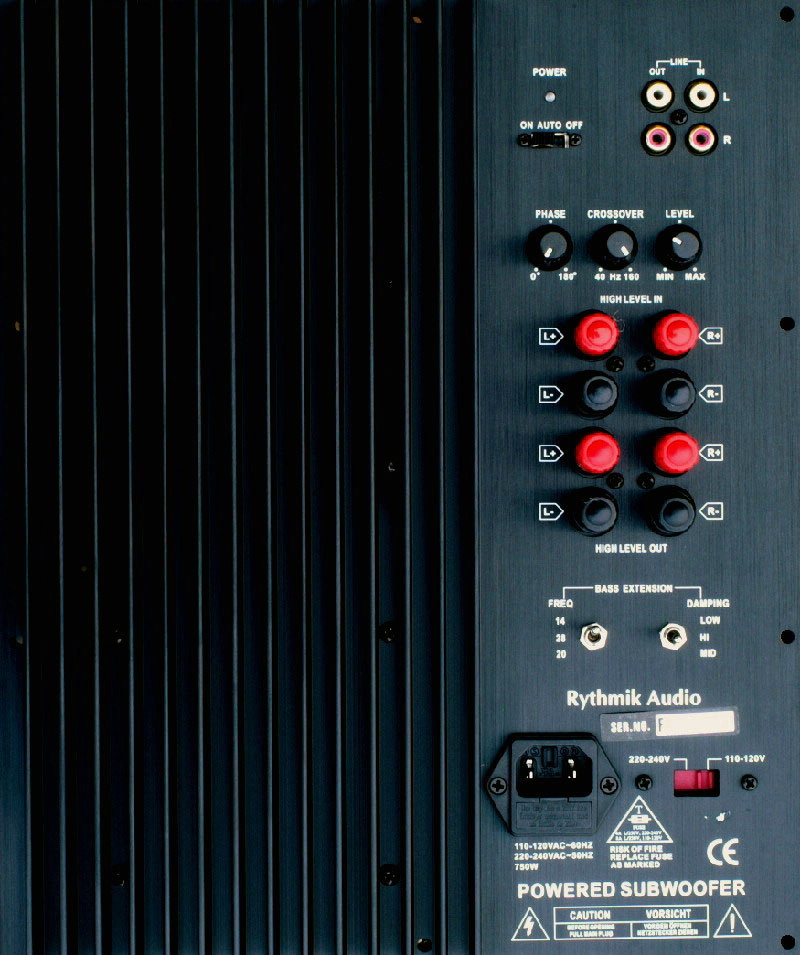There are a few ways subs can be hooked up to the system, and much of it is dependent on the preamp. You will find that there are preamplifiers with or without sub-outs..
The Adcom GFP 750 is an example of a preamp without a 'sub-out'.
http://www.stereokorea.com/bbs/data/i_etc/Adcom_GFP_750_r.jpg[img]
Here is an example of
An example of a preamp with a sub-out is the Emotiva usp-1:
[img]http://www.emotiva.com/usp1/usp1_bass.jpg[img]
Looking at the picture on the Emotiva, if you gander at the right, you will see something called 'Full Range'. This is what essentially preamps without 'sub-out's do. They send the whole audio frequency to whatever is next to receive it. Next to that, you will see an option called 'high-pass' and then 'sub-out'. This is a 'high pass filter' and it can exist on the sub or it can be on the preamp or both depending on the actual model of each.
The purpose of a high-pass filter is to filter out frequencies before sending it along. If you look at the Emotiva, you will see two knobs... one is above the 'sub-out' output and the other is above the 'high-pass' output. You are able to adjust which portion of the audio range you want sent to the sub and which you want sent to the speakers. This is important because if you are sending a full range signal to monitors, it is overburdening those smaller drivers by forcing it to do the bass work. By removing the load of the deep bass from the monitors, it makes them sound a good deal clearer because they can focus on the midrange and high frequencies, which monitors excel at. It also allows you to specify which range of the bass you want the sub to handle. Without high-pass filters, your monitors will be overburdened trying to produce the full range of the audio spectrum and you will also get bass overlap meaning the monitors will be producing bass, but the sub will be producing some of those same upper bass frequencies. This overlap will make things muddy sounding because there is too much bass.
Now, if your preamp doesn't have a high-pass filter, make sure you get a sub that does have it. Then hook the full-range outs from the preamp to the 'line-in' of the sub. Here is an example of the back of a sub's plate amp:
[img]http://www.rythmikaudio.com/images/A300SE.jpg[img]
At the top you will see the 'line-in' and 'line-out' inputs and outputs. You connect the interconnects from the preamp into the line-ins of the sub and then you connect two more interconnects from the sub's line out to the amplifier. You then adjust the high pass filter on the sub to your liking.
With most decent monitors, subs are recommended to be crossed over at around 80 hz. If you have a smaller monitor, you may have to cross over at 100 or even 120hz if the sub supports it due to them having smaller drivers and not really being that good at producing bass. The reason it is recommended to cross over at 80hz is because above that mark, you start becoming able to locate the bass, meaning it sounds like it's coming from the sub. With a high quality sub and a cross over at 80 or below, it becomes hard to tell that the sub is even on because you don't really hear the bass coming from the sub. It just seamlessly blends in with the music.[/QUOTE]
Once again, thanks for the awesome write up. Sure to help me when I start doing some more serious and in depth research.
[QUOTE=Winged Creature]Keep you dac/preamp for now, upgrade the monitors and get a power amp that will give you the biggest improvment in sound.[/QUOTE]
Er, I misspoke a little. It's a 2in1 which fit my bill earlier, but not so much now. I'm probably going to end up looking into monitors in a few months or so when I can toss out ~1600 for both of those things. Aside from that there's really not enough room to toss in monitors, stands, and a subwoofer in my room atm. I'm probably going to get a house with friends later on, so that's the perfect opportunity to upgrade.







